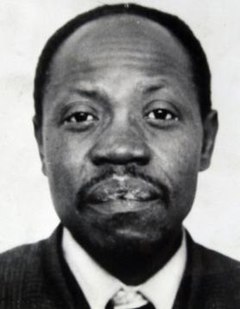As a British subject, it is likely that David had hopes of being welcomed by the ‘homeland’ when he arrived in Hull. Nigeria had been designated a Crown Colony in 1861 and the 1948 British Nationality Act granted citizenship rights to everyone living under British rule. Oluwale was one of an estimated 600 million people covered by this Act (Paul, 1998).
In public, British politicians presented the British Nationality Act as evidence that Britain was a racially tolerant nation. Colonial subjects were encouraged to regard Britain as their ‘mother country’ and to see the British Commonwealth as a ‘partnership of nations and races’ (Webster, 2005, p. 96).
David’s experiences in Britain show that the expectations of citizenship were often very different from the reality. Non-white migrants were often subject to overt racism and ‘colour bars’ were a common feature of daily life. As Reena Goldthree has argued, ‘it was not uncommon to find housing or employment advertisements explicitly barring non-white people’ (Goldthree, 2016, p. 29).
The situation in Leeds was similar to other industrial cities. A 1955 report by the Leeds International Council described a lack of integration between white and non-white residents. It explained that non-white migrants often lived in poor conditions, in ‘houses which no Englishman will touch’ (The Leeds International Council, 1955). This was true for David, who spent his early years in Leeds living in lodging houses with other Africans.
The government’s approach to non-white migration also changed during David’s lifetime. In 1953, the year that David was committed to Menston psychiatric hospital, the government set up an interdepartmental working party on ‘Coloured People Seeking Employment in the United Kingdom’. It concluded that colonial citizens should be deported if they were convicted of a crime carrying a custodial sentence. It was the first in a series of reports that resulted in stricter controls over migration during the 1960s.
Historians have since demonstrated that the main reason for the changing approach was a concern that non-white migrants could not be integrated into white British society (Paul, 1998, p. 233). This explains why the controls were combined with an attempt to tackle discrimination in the 1965 Race Relations Act. This criminalised any act of discrimination which may occur in housing, employment and other services.
Investigations carried out in the late 1960s suggest that such Acts only had a limited impact on public opinion. A survey on Racial Discrimination in England contained many examples, including one from an unnamed black person who explained:
‘Because I am black, people say all sorts of things like “go back to the zoo”. They don’t believe we were born by human beings. They believe we spring from monkeys’ (Daniel, 1968, p. 47).
We know that David experienced similar instances of racism. For example, Kester Aspden has shown that after being arrested for disorderly conduct in February 1969, a police officer crossed out the nationality ‘Brit’ on official police reports and wrote the racial slur ‘wog’ (Aspden, 2008, p. 114).
It is therefore significant that David’s death was considered by a Parliamentary Select Committee on race-relations between the police and migrant communities. This highlighted a clear divide between different communities. The Leeds police felt that there was no racial problem, reporting that they had:
“Found no real evidence of discontent between them [the police] and the coloured community, except for a small minority of West Indians” (Select Committee, Vol. 1, 1972, p. 13).
By contrast:
“The United Caribbean Association were sure that the Leeds police practised racial discrimination. Harassment, intimidation and wrongful arrests were frequent, and policemen had ‘every black person under suspicion of some sort’, their attitude being to provoke trouble rather than prevent it” (Select Committee, Vol. 1, 1972, p. 6).
The Parliamentary Select Committee was one of the first steps in an ongoing effort to improve the relationship between the police and BAME communities. The simple fact that it identified a problem that officials did not believe to be there, was an important outcome.
The circumstances of David’s death were also highlighted by anti-racist campaigners. In January 1972, Ron Phillips wrote a forceful article in the publication Race Today that accused Geoffrey Ellerker and Kenneth Kitching of what would now be called hate crime. He argued that:
“If Ellerker and Kitching did chase or throw David Oluwale into the river Aire, they would have been acting, as they saw it, in defence of a society that defines black people as a threat. They would have been acting on behalf of a society which has indicated time and time again that it would prefer blacks to disappear” (Phillips, 1972, p. 18).
David’s death forced Leeds – and British society in general – to face up to the way in which minority groups were treated. Fifty years later, we can use his story to do the same.
